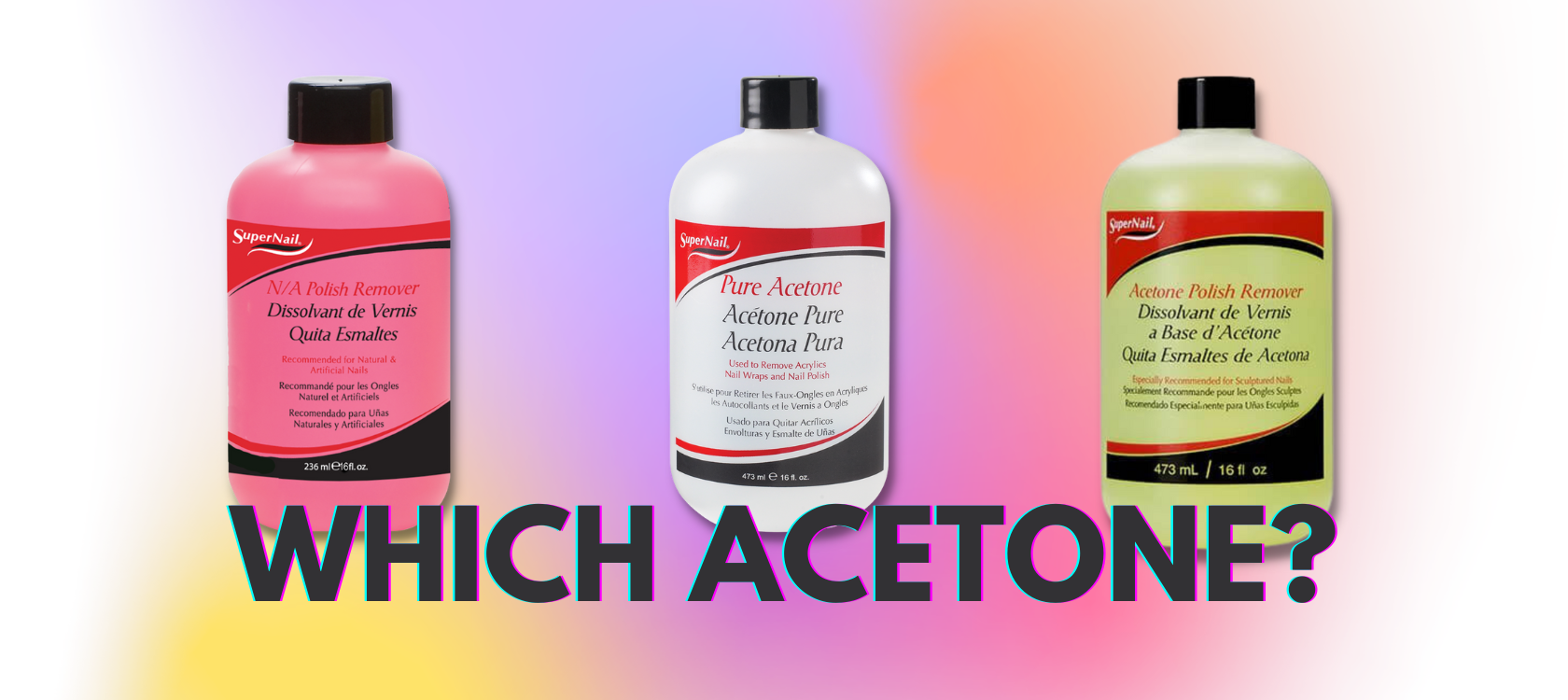
Understanding Acetone: Your Guide to Finding the Right Polish Remover for Your Nail Care
Acetone is a popular chemical used in nail care products for its ability to remove nail polish and clean nails effectively. When it comes to nail care, there are mainly three types of acetone commonly used: pure acetone, acetone-based, and non acetone nail polish removers. Each type has its advantages and disadvantages, and understanding these can help you make better choices for your nail care routine!
Pure Acetone Polish Removers:
Pros:
- Effective Nail Polish Removal: Pure acetone is the strongest of all the polish removers, making it great for removing stubborn nail polish, even glitter or gel-based ones, and acrylic nails in a shorter time compared to non-acetone alternatives.
- Time-Saving: Because of its strenght, pure acetone requires less effort and time for nail polish removal, reducing the risk of damaging your nails with excessive rubbing.
- Ideal for Nail Art: Nail enthusiasts often prefer pure acetone for intricate nail art designs, as it can erase mistakes and clean up edges with precision.
Cons:
- Drying and Dehydrating: One of the main drawbacks of pure acetone is its strong drying effect on nails and cuticles. Frequent use can lead to brittle and weakened nails, causing them to peel or break easily.
- Odor: Pure acetone emits a pungent odor, which can be unpleasant for some users during application. Pro tip, use it by an open window or have a small portable fan next to you to blow the odor away from you!
- Strength: Because it's very potent, it's important to use it with caution. Pro tip, when using it at home, lay multiple towels down (ones that you don't mind potentially getting ruined) to not damage any furniture. It's also highly flammable and must be stored properly and kept away from any open flames.
Acetone- based Polish Removers:
Pros:
- Gentler on Nails: Compared to pure acetone, nail polish removers that contain acetone are milder and less likely to cause excessive dryness, making them a better option for those with sensitive nails.
- Moisturizing Agents: Many acetone-based nail polish removers include moisturizing ingredients like glycerin or oils to counteract the drying effect and keep the nails and cuticles nourished.
- Varied Formulations: These removers often come in different formulations, including acetone-free versions, catering to various nail care needs.
Cons:
- Slower Nail Polish Removal: Acetone-based nail polish removers may require more effort and time to remove stubborn nail polish or multiple coats, compared to pure acetone.
- Less Effective on Nail Art: For intricate nail art or glitter designs, acetone-based removers might not be as efficient as pure acetone in cleaning up mistakes.
- Residue Buildup: Some acetone-based removers can leave behind a residue, requiring additional cleaning to achieve completely clean nails.
Non- Acetone based Polish Removers
Pros:
-
Gentler: Non-acetone removers are the most gentle of the 3 and less harsh on nails and cuticles. They contain milder solvents that are less likely to dry out the nail bed, making them a better option for those with dry or brittle nails, anyone trying to minimize damage, or for kids.
-
Safer for Natural and Artificial Nails: Non-acetone removers are typically considered safer for use on natural nails and various types of artificial nails, such as gel and acrylic nails.
-
Less Intense Odor: Non-acetone removers often have a milder and less intense smell compared to acetone-based removers. If you're sensitive to strong odors, skin allergies, or irritation on your hands, non acetone remover is preferred.
Cons:
-
Slower Removal Process: generally it takes longer to dissolve nail polish compared to acetone-based removers. This may require more effort and multiple applications or repetitions during the nail polish removal process especially with darker polish colors, gel, and acrylic nails, to remove them completely. In fact,it may prove to not work at all on strong adhesives and nails with multiple or thicker coats.
-
Cost: Non-acetone removers can be more expensive than acetone-based removers due to their milder and safer ingredients.
Overall, they each have their own pros and cons and it comes down to what fits your type of nails. For those looking to incorporate a quick and effective nail polish removal in their routine, pure acetone is the best choice, but it should be used sparingly because of its drying effects. On the other hand, acetone-based nail polish removers are gentler on nails and come in various formulations to suit different preferences. Ultimately, finding the right balance and understanding the needs of your nails can help you make an informed decision on the most suitable acetone product for your nail care routine. Remember, regular nail care, along with occasional pampering, can contribute to healthier, stronger, more beautiful natural nails!
Questions? Click here to speak to an expert and we'll help find the right acetone for YOU!

Leave a comment